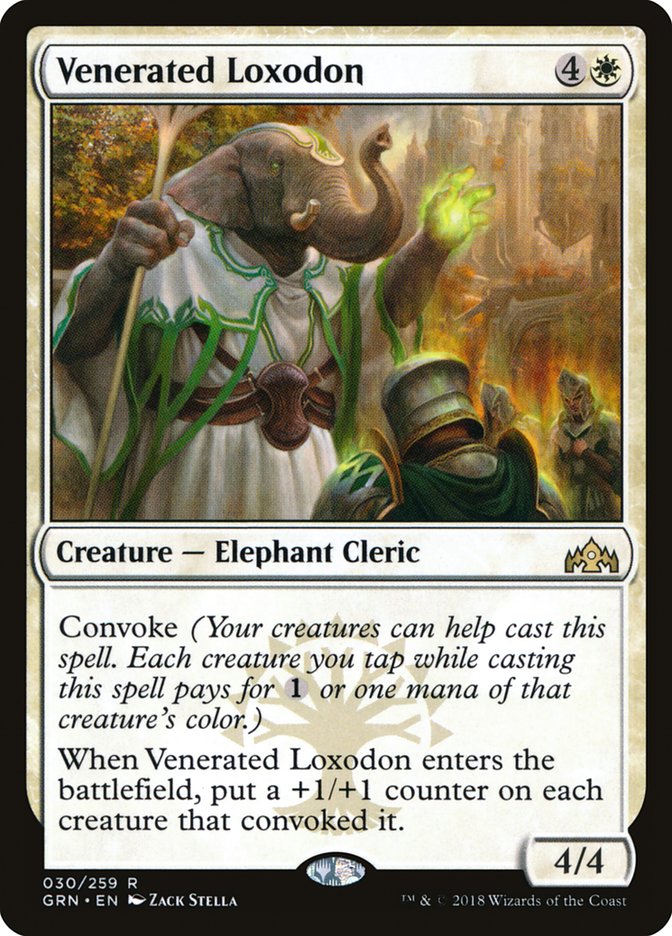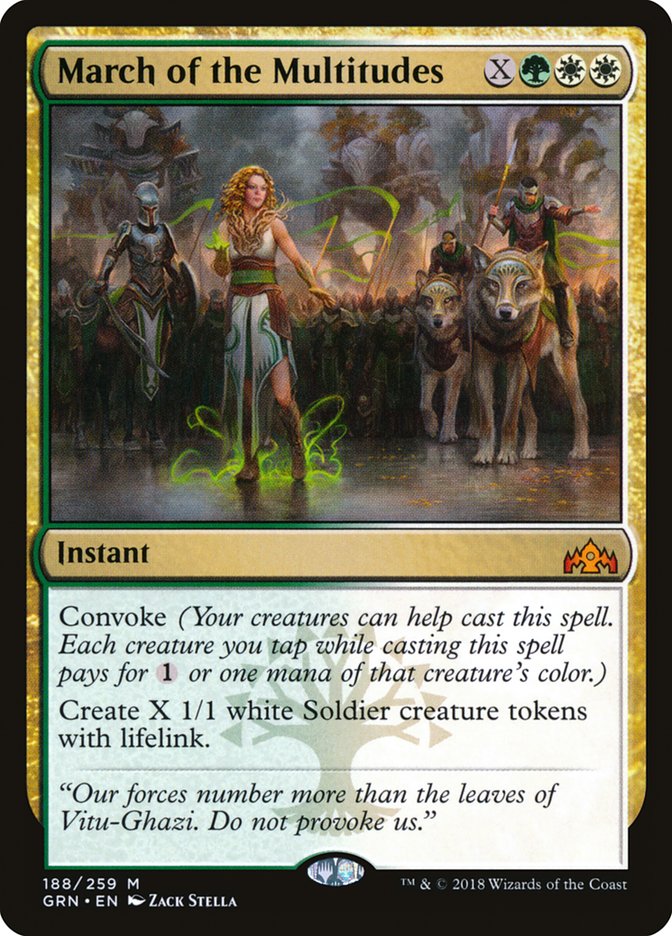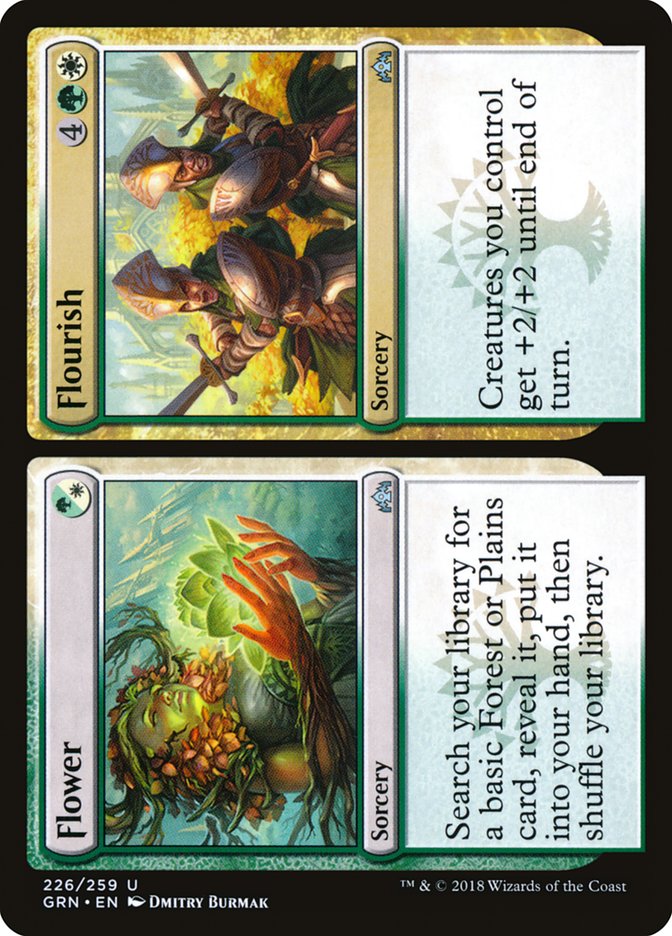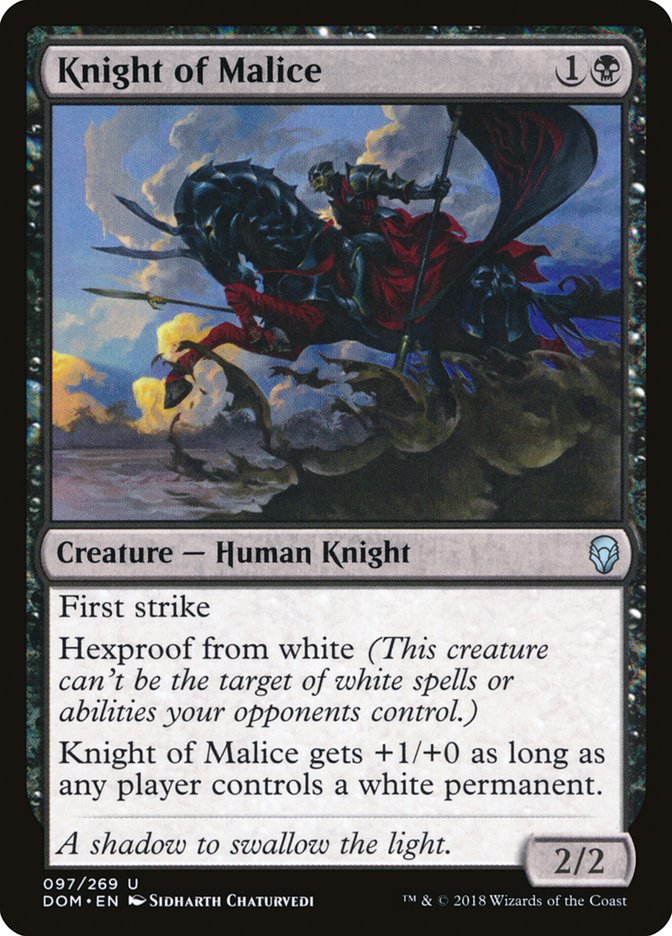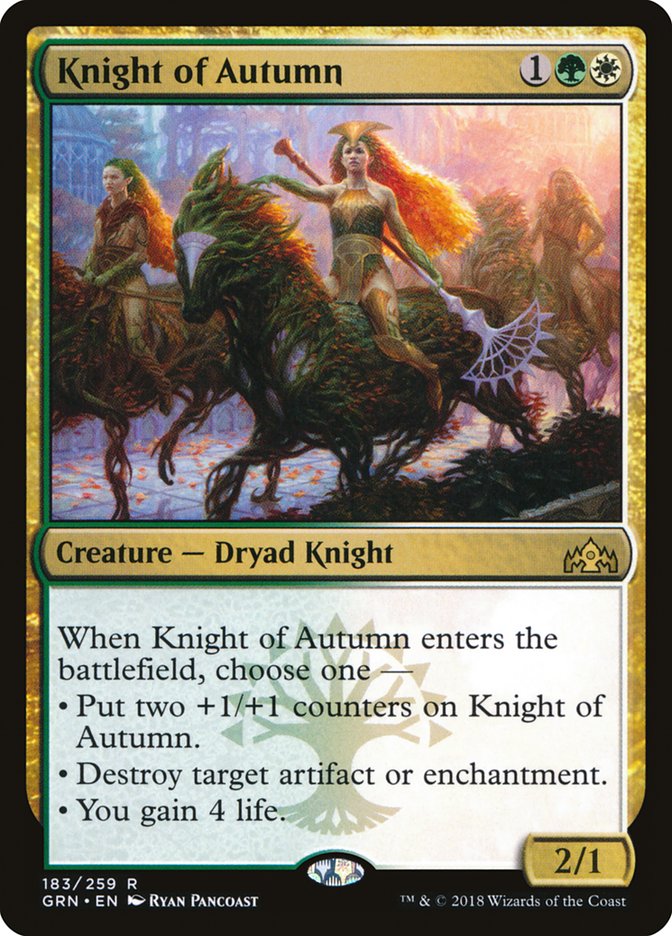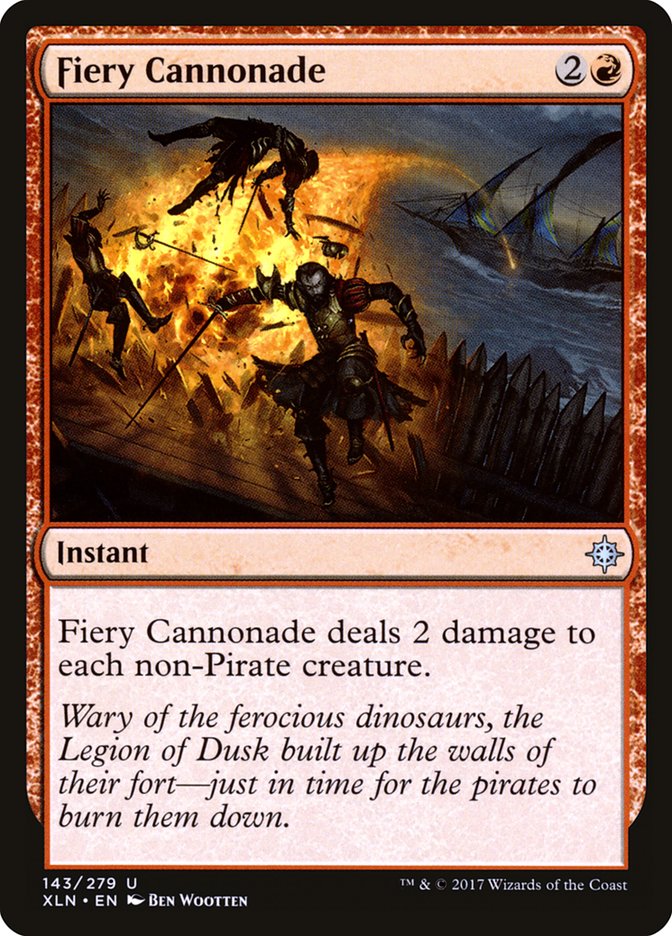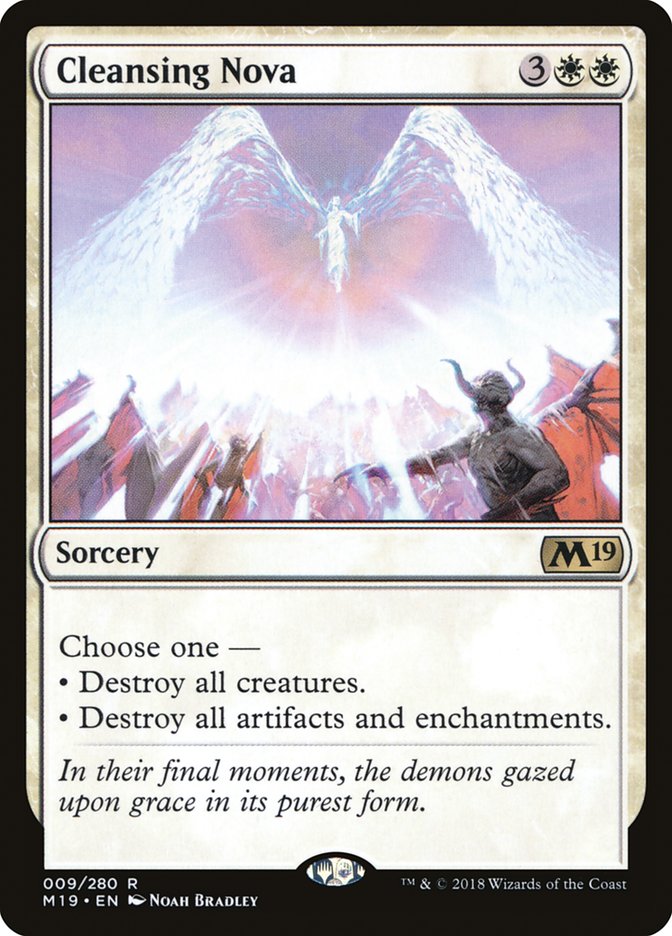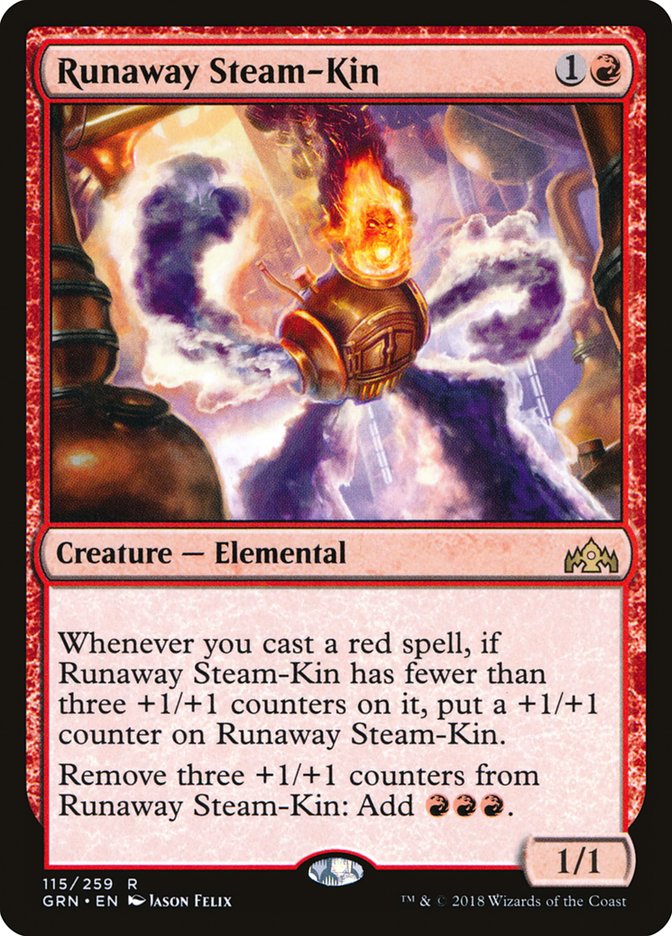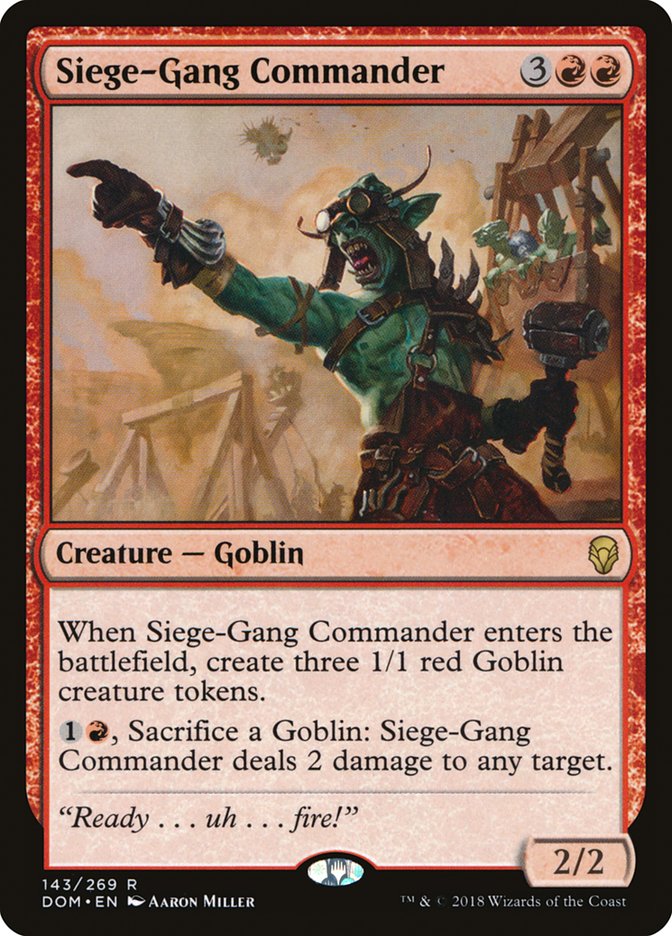Today we’re going to be looking forward into Guilds of Ravnica
Standard. There’s been so many topics worthy of discussion as of late, but
many of my peers have stayed on top of them. I’ve instead been getting over
a horrific cold, trying out MTG Arena, and learning the format. I really do
stay in my lane, don’t I? Maybe I should start branching out a little one
day, but today isn’t going to be that day. There’s just too much to unravel
in this Standard format!
Guilds of Ravnica
Standard is all about powerful effects and metagaming. All the best cards
eventually get found, and while some perfect strategies are showcasing
them, others do the opposite, trying to dethrone the new kings and queens
of Standard. It seems like the first strategy in line for the throne is
Selesnya Tokens. An unlikely ruler, yes, but one that seems to have taken
over MTGO and Arena for the past week nonetheless.
Creatures (14)
- 2 Shalai, Voice of Plenty
- 4 Emmara, Soul of the Accord
- 2 District Guide
- 4 Venerated Loxodon
- 2 Trostani Discordant
Lands (21)
Spells (25)

One would think a deck like this would struggle with Goblin Chainwhirler,
but the once-ruler of Standard no longer has the same King’s Guard to
protect it. Goblin Chainwhirler seems to simply be just another decent card
in Standard, as these Selesnya Tokens decks can hold their own against it.
There are a few reasons why this deck can compete with the Goblin, with the
first being Venerated Loxodon. Similar to putting a Rishkar, Peema Renegade
+1/+1 counter on a Llanowar Elves, this Elephant protects the already
established battlefield presence from the impending doom that is Goblin
Chainwhirler.
The second incredible feature to this deck is the synergy between March of
the Multitudes and Flower. Like Traverse the Ulvenwald, Flower/Flourish is
a nice way to cheat on how many lands you need to play in a deck. This
helps when flooding occurs as you now have access to additional resources.
Flourish isn’t the most powerful effect, but can become degenerate when
following behind a gigantic March of the Multitudes that was cast during an
opponent’s end step. This combo steals games while doing little to impede
deck construction, leading me to believe this little ditty is going to be a
staple in Standard for quite some time.
Well at least until the correct answers see play.
If you’re playing black, you should sideboard Knight of Malice. It’s a
great answer to History of Benalia while also putting decent pressure on an
opponent playing Selesnya Tokens. I’ve played a decent amount of Standard
already, and while doing so also watched streams of players playing the
format. What I’ve learned from this is reactionary answers like Duress,
Negate, Disdainful Stroke, and other targeted one-for-one removal just
don’t work that often. The longer the game goes, the higher chance a deck
like Boros or Selesnya must sequence their cards in a way that gets around
answers like this. The only way to really gain footing against decks like
this is to put something on the battlefield that stems the bleeding long
enough to execute a larger scale strategy without dying to the swarm.
Knight of Malice might not seem like the best sideboard card, but the role
it serves against certain decks is phenomenal.
Similar to Knight of Malice, Knight of Autumn is a great way to get onto
the battlefield while interacting with the opponent. What I like most about
this card is that it cleanly trades with History of Benalia as the 2/1 body
can trade with the first Knight token after it destroyed the enchantment.
Another thing worth mentioning is how great it also is against Conclave
Tribunal, making it the perfect punisher for decks leaning on these two
enchantments, specifically.
Knight of Autumn is also maindeckable thanks to its ability to trade with
Steel Leaf Champion, a difficult card to deal with in the early game for
most Selesnya decks and is a great answer to Experimental Frenzy. Oh, and
it kills Search of Azcanta and Arguel’s Blood Fast! Knight of Autumn is
just the perfect kind of card for a format that gets complex, which I
expect Standard to become.
I haven’t found the perfect home for Fiery Cannonade, but everything’s
pointing towards this card being great in Standard. It’s just such a clean
answer to both March of the Multitudes and Legion Warboss, two of the
formats most punishing cards when left uncontested. My inclination is that
Fiery Cannonade will fit perfectly into a Jeskai Control deck. I’m not yet
sold on the strategy being good enough, but if it is, I’d imagine this card
playing an important role in the deck’s ability to compete within the
format.
I’m not wasting your time bringing up the fact that the format’s Wrath of
God is going to see play in the format’s control decks. I’m aware that’s
not the premium level content you’ve come for. My prediction is actually
that Cleansing Nova will find its way into Selesnya Token sideboards as
it’s not only a way to catch up when too far behind, but also can press the
advantage when an opponent is Conclave Tribunal flooded. It’s been a while
since we’ve seen creature decks play sweepers in their sideboards, but I
expect that to change here with Guilds of Ravnica. The days of
Vehicles, Delirium, Energy, and Chandra, Torch of Defiance are over.
Creatures, once again, die to removal!
Switching gears, I want to talk about Magic’s newest Tarmogoyf. I say that
somewhat sarcastically because I’ve seen many people refer to Runaway
Steam-Kin in this manner. While I usually don’t buy into comparisons like
this, I do have to say this card is enticing. Not because it gets swole
like Tarmogoyf but due to its secondary ability. Free spells and free mana
are the things that break Standard time and time again: Dredge, Storm,
Burning-Tree Emissary, cascade, and many other cards/abilities created
degenerate strategies in Standard that plagued the format until they
rotated out. You get what you pay for in Magic, but free is almost always
better than expensive, even if it’s a marginal effect.
Runaway Steam-Kin gives you free mana. Free mana! Sure, it comes at the
cost of the creature’s power and toughness, but not really when you
consider that it can only get as big as a 4/4. Once you use the mana once,
it will go back to being a 2/2 with the ability to grow again. This is
extremely powerful for a two-drop, and we need to start thinking bigger
when we look at this card.
In my opinion, good cards in Magic are those you don’t need to work that
hard to make effective. They become great cards when you combine other
cards with them that are good, but also work well together. I believe the
combination of Runaway Steam-Kin and Siege-Gang Commander is exactly that.
A turn 2 Runaway Steam-Kin doesn’t need anything special to happen. You can
play a Goblin Chainwhirler on turn 3, followed by a Rekindling Phoenix on
turn 4. Besides being a great curve, there’s nothing special about it. You
just played the cards you put into your deck. Now on turn 5 you can play
Siege-Gang Commander and threaten an activation of its ability using the
Runaway Steam-Kin’s ability. It doesn’t mean you have to do it, but the
option is available which can be just as threatening.
Now what makes this duo even more special is that sometimes it’s difficult
to play a five-drop on turn 5. You need five lands and to have had a decent
enough curve up to this point to make it effective. This is a difficult
task in most games with decks that don’t play cards like Rogue Refiner or
District Guide. Runaway Steam-Kin helps in a similar way as you can play
another two-drop on turn 5 to get the third counter, and then use its
ability to obtain enough mana to cast Siege-Gang Commander.
Additionally, Runaway Steam-Kin helps fight against stumbles in such an
eloquent way. Less lands means more spells which means you can cast a lot
of them thanks to its ability. The more I think about this, the more
excited I get about playing with this card. Here’s a very rough sketch of a
Boros variant:
Creatures (27)
- 3 Siege-Gang Commander
- 2 Rekindling Phoenix
- 4 Relentless Raptor
- 4 Goblin Chainwhirler
- 2 Boros Challenger
- 3 Legion Warboss
- 4 Runaway Steam-Kin
- 3 Aurelia, Exemplar of Justice
- 2 Tajic, Legion's Edge
Lands (24)
Spells (9)

Did I forget to mention that Runaway Steam-Kin can also help cast Goblin
Chainwhirler when you don’t have enough red mana on the battlefield? Oh,
and that it will also help cast two Goblin Chainwhirlers in the same turn!
What can’t this card do?
Ignore the bad sideboard for a moment as I just threw in cards to give you
an idea of what I think will be important moving forward. Lightning Mare,
for example, doesn’t seem like the strongest of cards, but it would be nice
to have cards that can’t be countered when a control opponent is clearly
holding up Essence Scatter. There’s so many cards to try out in Boros Aggro
that it’s difficult to feel like this will be the correct mixture. Only
time will tell which cards the best ones are, but I’m pretty sure there’s
going to be a great deck once we collectively work out all of the kinks.
Even though I love Path of Mettle, I believe Runaway Steam-Kin will be too
powerful of a card to ignore.
Creatures (4)
Planeswalkers (5)
Lands (26)
Spells (26)
- 4 Gift of Paradise
- 3 Settle the Wreckage
- 4 Search for Azcanta
- 4 Chart a Course
- 1 Karn's Temporal Sundering
- 4 Nexus of Fate
- 4 Root Snare
- 2 Pause for Reflection
Sideboard

The last deck I’ll be talking about today is what I will most likely end up
playing against Todd Anderson later today in our VS Live! match over at
twitch.tv/SCGTour. Today we’ll be playing three matches – one Standard, one
Modern and one Legacy – replicating a Team Constructed match in preparation
for SCG Columbus this weekend. I’m using Bant Nexus as my Standard deck not
because I think it’s amazing, but in fact the opposite. I’m under the
assumption that this deck is bad now due to the loss of both cycle lands
and Glimmer of Genius. These cards were just so important for the strategy.
Those losses might not be a big enough to take Bant Nexus down, but there’s
just so many cards that threaten the strategy as a whole. Unmoored Ego,
Assassin’s Trophy, and the fact that Duress and Negate are still around
make me skeptical at best for the deck’s chances. That said, we must learn
first as all the thoerizing in the world won’t prove one way or another.
Testing the deck on VS Live! makes the most sense as we collectively can
see if the deck has legs or not. I hope you join us at 1:00pm ET to see
what Bant Nexus can do!
To end the day, it’s clear to me that Guilds of Ravnica Standard
is going to be exceptionally complex as we must relearn so many things. Kaladesh really did a number on Standard and dictated the way we
played Magic for two years. Now that it’s been removed from Standard, we
must once again look at things in a different way. No longer do control
decks have Torrential Gearhulk, a card that had to be played due to its
absurd power level. Heart of Kiran plus Scrapheap Scrounger is no longer
around forcing people to play them as their two-drops. The world is anew
once again and it’s going to take some time to figure things out, but just
knowing we get to explore Standard again is wildly exciting.
I’ll be back Thursday with the information I’ve learned over the next
couple days as the only thing I’m doing with my time right now is playing
Magic. There’re so many things we can complain about, justified or not, but
at the end of the day, we play the best game in the world. So go hop in the
queues and battle!


